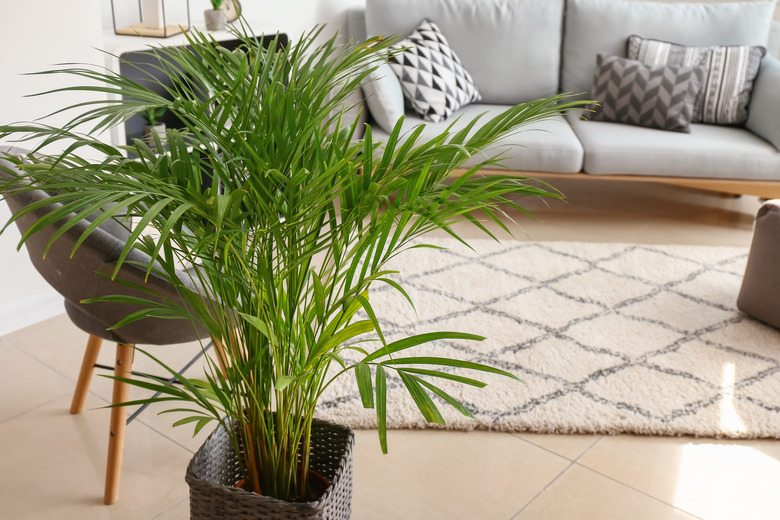How To Plant Areca Palm Seeds
We may receive a commission on purchases made from links.
Palm trees and palm plants add a tropical feel to any room or outdoor garden, and species like the areca palm (Dypsis lutescens, USDA zones 10-11) are surprisingly easy to grow. Are you wondering how to sow areca palm seeds? With just a bit of preparation, you can successfully plant these seeds and grow stunning plants at home.
Where Do Arecas Grow?
Where Do Arecas Grow?
This particular species of palm tree is native to Madagascar and has lush foliage with soft, finely textured fronds. The tops of areca palms widen as they grow, and they can grow up to 20 feet indoors (30 feet outdoors). The plants are hardy and low maintenance and will beautify your indoor or outdoor space. Because of these key points, they are known as one of the most popular palm plants.
Areca palms are moderately salt-tolerant perennials in USDA plant hardiness zones 10 and 11, where temperatures do not dip below freezing. They can also survive in many warmer sections of zone 9b that border zone 10a. Arecas will grow in protected spots as well, but there may be leaf-tip burn in all zones during the winter.
You've probably seen areca palms in shopping malls or by outdoor pools. These palms do make for popular houseplants, but indoor temperatures should range from 60 to 75 degrees Fahrenheit to allow for proper growth. They need bright, indirect light since direct sunlight can burn their leaves. Find a spot that will give your areca enough room to spread out, as they can grow up to 10 feet in diameter.
Growing Areca From Seeds
Growing Areca From Seeds
While it is common for people to buy young areca plants, they can also be grown from seed. Fresh seeds can be planted right away, but otherwise, you will have to remove the fleshy exterior of the seed. Run them under a garden hose while rubbing them against a large mesh screen. Next, put the seeds in a glass container and fill it up with white vinegar. Allow them to soak for a few hours and then drain and rinse them.
Use a potting mix designed for palm plants, ideally with a pH level of 6.0. Add this to a 3-inch germination pot and add water until it reaches 3/4 inch from the top of the pot. Add one seed per pot with the seed's pointed tip just sticking out and give it spritzes of water using a spray bottle.
Keep your germination pots out of direct sunlight and keep the room temperature at 80 to 85 F. Keep the soil moist but not soggy. In this environment, the seeds should start sprouting in about six weeks. Once the seedlings have grown a few leaves, it is time to transplant them.
Taking Care of the Seedlings
Taking Care of the Seedlings
Transplant your baby areca palm to a new pot and keep the air temperature at 60 to 75 F. Check the soil to make sure that it is moist and do not overwater the plant. Areca palms can be watered daily, if needed.
If you choose to transplant your areca palm outdoors, you must do so before the roots start curling inside the pot. Fertilize your areca three times a year and trim off any dead canes. Experts recommend allowing brown fronds to die and fall off on their own.
